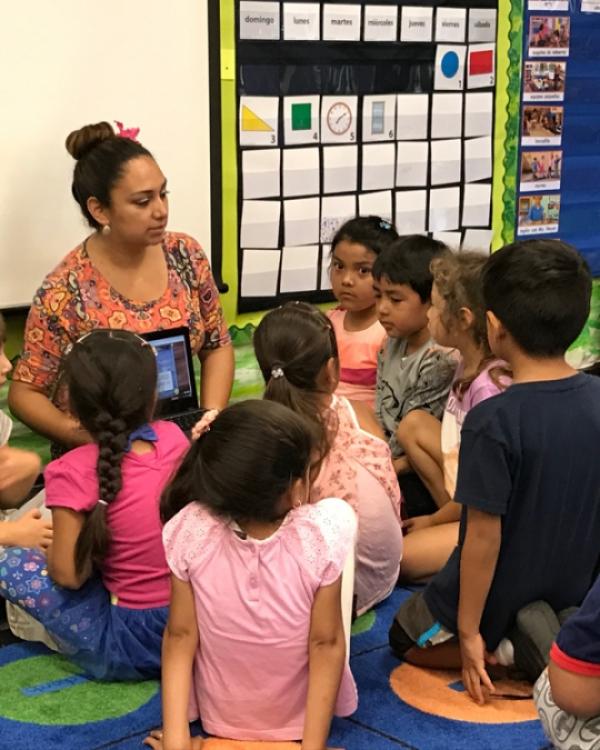
To put it mildly, California has had a strained history with bilingual education. In 1998, voters approved statewide initiative Proposition 227 with 61% of the vote. It effectively ended bilingual education for Limited English Proficient students in the state. Then 18 years later in 2016, voters changed their minds and overwhelmingly approved (73% yes) Proposition 58, reversing Prop 227.
“Prop 58 repeals the requirement that students be taught in English-only classrooms in California,” Department of Counseling, Clinical and School Psychology Associate Professor Matthew Quirk says. “If you have a significant number of non-English speakers, then you have to consider bilingual education programs.” Quirk’s research on school readiness had established only a small subset of English Learners managed to catch up if they entered kindergarten unprepared. So, in this new world of bilingual education he wanted to be able to evaluate the new programs so educators could “understand the best ways to meet the needs of our English Learner students.”
Luckily Quirk has strong allies in Jamie Persoon, Principal at Canalino School in Carpinteria, and in Dr. Carlos Pagan, Director of Literacy and Support in the Santa Barbara County Education Office. “Prop 58 opened the door for Jamie to push for a bilingual program at her school,” Quirk relates. Canalino was able to set up four different kindergarten classes, two that are transitional bilingual and two English only, with a lottery system set up to determine which children ended up where. This neat division gave Quirk the chance to develop an accelerated longitudinal design. “The full benefits of the program often take four to five years to come out,” he says. “In the first few years bilingual programs can yield slightly lower performance on traditional measures as students are learning language and content [in two languages], but there’s a tipping point, and at about fifth grade most students catch up and some start out performing those in English only programs on traditional measures of achievement.” Not to mention that they are also becoming bilingual.
Quirk is tracking student data in three areas: 1) executive function (metacognition); 2) academic achievement, and, 3) language development (Spanish and English). He hopes to find what other studies have discovered, that being bilingual makes you better at managing your thoughts. (That is, the program helps both English learners and English speakers). He also points out an unintended consequence of the process—Persoon says many more Spanish-speaking parents are now in the classroom. “When it was English only, they didn’t feel as if they could contribute,” Quirk points, out, “but now many of these parents are engaged in the classroom, which is great for the school and their children.”
Quirk also admits there’s another issue for Canalino students to face—the difficulty getting redesignated from English Learner status. “It’s extremely difficult, as you not only need to be proficient in English, but you also need to be at grade level in terms of academic achievement,” he stresses. “You have to demonstrate you learned everything you ‘learned’ while not proficient in the language of instruction (English)…and need a letter from a teacher.” The issue grows problematic at the end of fifth grade, for if students aren’t redesignated, it becomes extremely difficult to fulfill the A-G requirements they will need to apply to a CSU or UC. Quirk simply adds, “It’s a social justice issue.”
For one can take a much larger look at the issue, as Carlos Pagan does at the county ed office. “Pagan sees it as California is the fifth largest economy in the world, and if we want to continue to compete, we need to be bilingual,” Quirk claims. “In Europe, it’s not just about being bilingual but how many languages do you know.” What’s more, as this story was being drafted, the CA State Superintendent of Schools released an initiative to move CA schools toward bilingual programs. Superintendent Tom Torlakson called for tripling the number of high schoolers who graduate with a “Seal of Biliteracy” and quadrupling the number of dual language immersion programs by 2030.
So there’s a certain urgency to figure out what works best in Carpinteria, and then perhaps that can expand throughout the state. Quirk says, “The hope is that if we can provide some data, it will help spark people to have conversation about creating more of these programs in our community.”